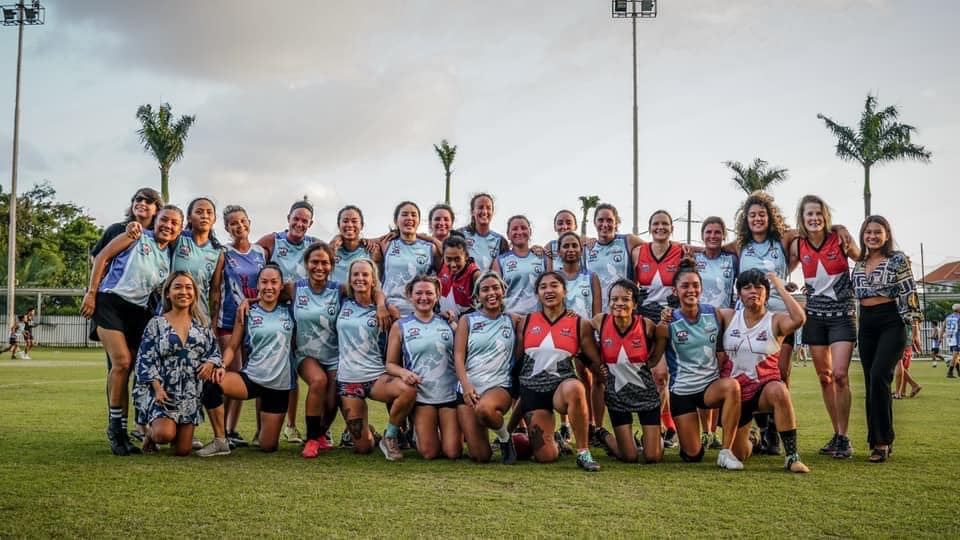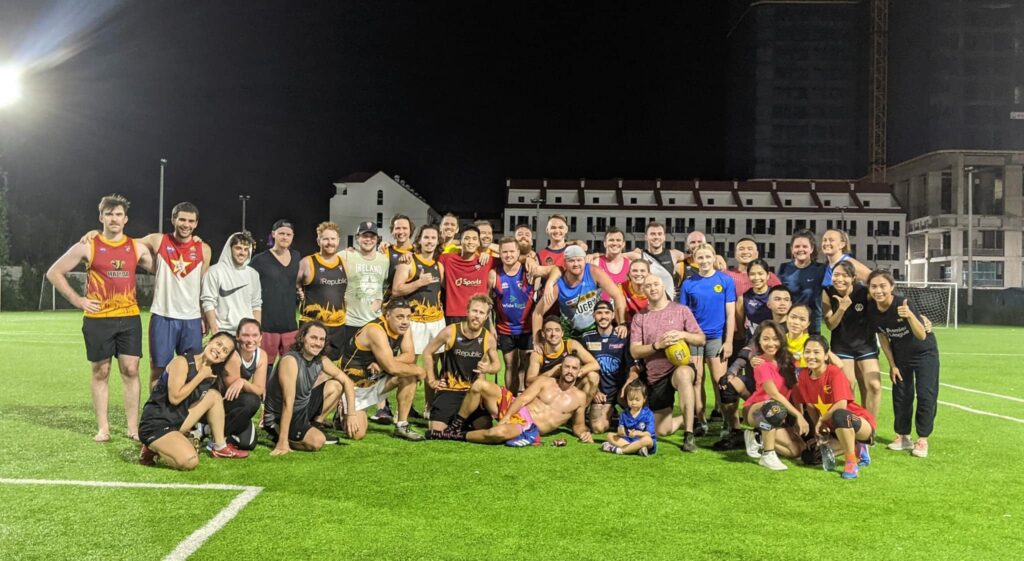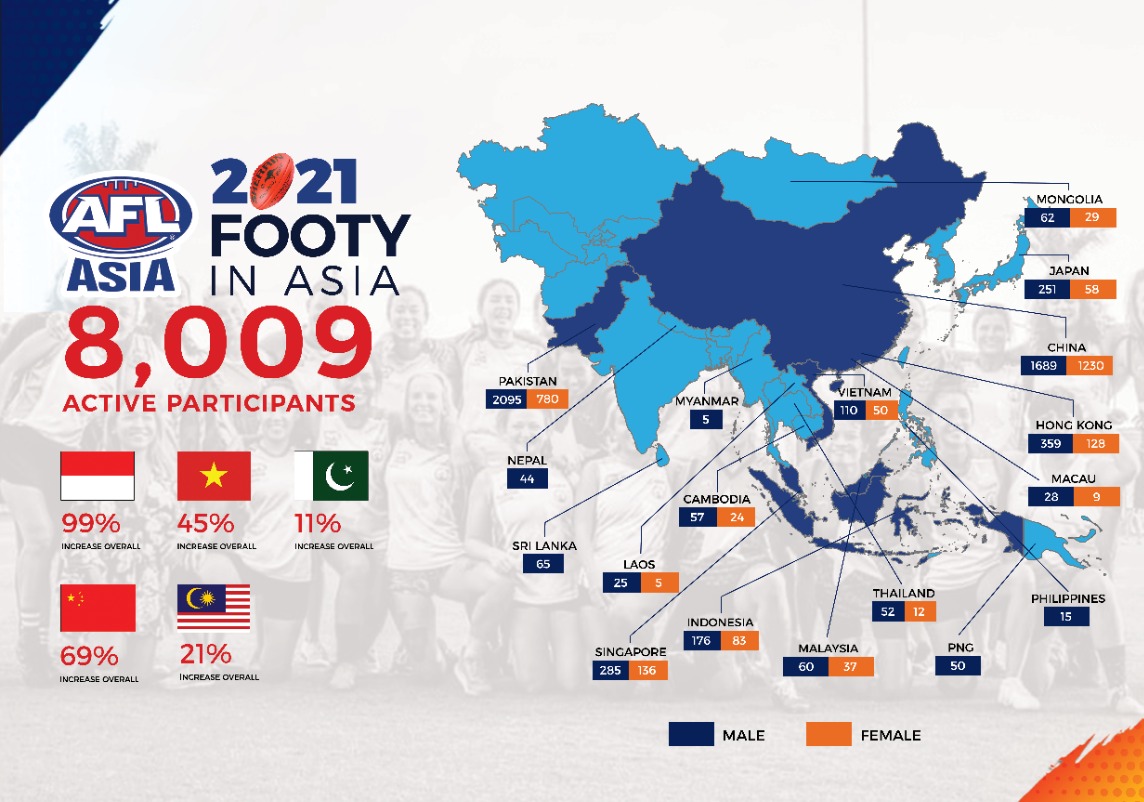Although football has only been played during short periods throughout the 2021 season, participation numbers have still been encouraging across Asia.
Whilst the overall participation numbers have dropped, there hasn’t been any football played at all in India and if they had their 7,000-odd expected participants this year (6,289 participants in 2019 and 7,524 participants in 2020) AFL Asia would’ve more than likely have recorded a healthy increase in participation numbers.
Given the likelihood of football recommencing on a continual basis at some stage next year, AFL Asia are expecting a sharp spike in participation numbers from where we were pre-COVID-19 which was 14,769 participants in 2019 to upwards of 18,000 in 2022.
Whilst some clubs and countries have struggled to train or play due to the ongoing pandemic, some clubs have thrived in 2021 and it’s important to celebrate their successes, innovative ideas and strategic approaches to keeping their players engaged, recruiting new players and growing our great game in new markets.
Football has bounced back in Indonesia, which has seen a massive 99% rise in participation from 2020 to 2021. There has been a considerable increase in female participation in Jakarta and also in Bali. Growth can be attributed to both the Jakarta Bintangs and Bali Geckos and their domestic leagues, with the Geckos establishing their domestic league this season. Bali is traditionally a holiday haven, but has become an international fishbowl for footballers, with 20 different countries represented in their domestic league. Unfortunately, AFL Indonesia and the Bintangs have been unable to run their school-based programs due to ongoing government restrictions and once they eventually ease expect participation numbers to flourish once again.
 The inaugural AFLW Trade-Indy Cup between the Jakarta Bintangs and the Bali Geckos.
The inaugural AFLW Trade-Indy Cup between the Jakarta Bintangs and the Bali Geckos.
Football is thriving in China, which has seen it record an impressive 69% growth in participants from 2020 to 2021. Amazingly, 2,700 students have had weekly access to an AFL program that is embedded in their school’s curriculum, which is a fantastic result and is a real credit to Howard Zhang and the Guangzhou Scorpions hierarchy. The growth of female participation has been super encouraging and points towards a Chinese AFLW team potentially playing at the AFL Asia 2022 AFLW Asian Champs. The Beijing Bombers have also extended their growth after resurrecting their club off the back of the pandemic last year.
 The GDAFL continues to drive the growth of the game in southern China.
The GDAFL continues to drive the growth of the game in southern China.
The Vietnam Swans achieved a superb 45% increase in participants over the past 12 months, including a 12% jump from pre-COVID-19 to 2021, which is terrific to see. The establishment of the VFL, HAFL & SAFL domestic leagues, continual growth of AFLW and an inclusive alignment with the GAA and rugby codes have significantly boosted their participation numbers. The Swannies concerted efforts and energy focused on their local development initiatives has paid off in spades, with 27 local players playing in Hanoi and Saigon.
 The training numbers continued to grow in Vietnam’s capital, Hanoi, during their 2021 HAFL season.
The training numbers continued to grow in Vietnam’s capital, Hanoi, during their 2021 HAFL season.
The Malaysian Warriors have achieved an outstanding 21% increase in participants in 2021. Off the back of their landmark achievement of becoming a registered entity, the Warriors growth stems from their involvement in the 2021 Brendan ‘Beej’ Chatham Cup International Rules Series with the Orang Eire GAA Club in the back end of the season, as well as Intraclub games when possible. The Warriors have some big plans in place for next year which are centered around their Auskick program and a new and yet to be released junior development program called ‘Boleh Kick’. Participation numbers are expected to thrive in 2022 off the back of these two junior programs running concurrently and is considered to be a ground-breaking initiative for the proud club.
 The AFLW Asian Champion Warriors continue to push the game in Malaysia.
The AFLW Asian Champion Warriors continue to push the game in Malaysia.
Whilst there’s only been an 11% increase in AFL Pakistan’s participation data from 2020-2021, the bigger picture truly tells the story with AFL Pakistan recording a gigantic 130% increase of participants since 2019, which is an amazing result. The growth has come from a new generation of female players, a strong focus on junior programs and several new men’s teams. Like Australian sporting clubs, football teams within Pakistan have aligned themselves with existing sporting clubs that have a number of sporting codes under its umbrella.
 AFL Pakistan continues to expand, with new teams popping up all over the country ahead of their 2021 National Championships.
AFL Pakistan continues to expand, with new teams popping up all over the country ahead of their 2021 National Championships.
New domestic leagues, new female players, an increase in local players and stronger relationships with GAA and rugby clubs have all spawned out of the global pandemic and are silver lining outcomes that have assisted in maintaining participation numbers and given clubs fresh and innovative options that they can build on moving forward.
With a plethora of green shoots across the region, we can’t wait to see what 2022 brings and anticipate a rapid rise in participation, and a renewed motivation and appreciation of what our great game provides this region and our AFL Asia family.






































